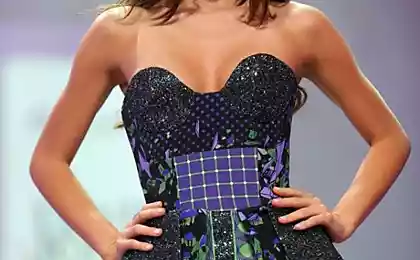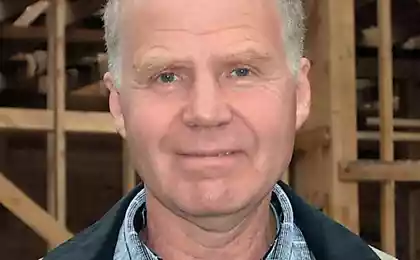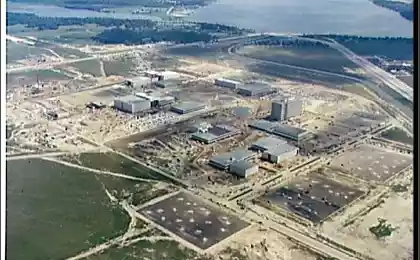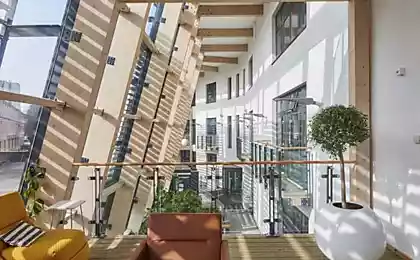692
Green building is becoming a European standard
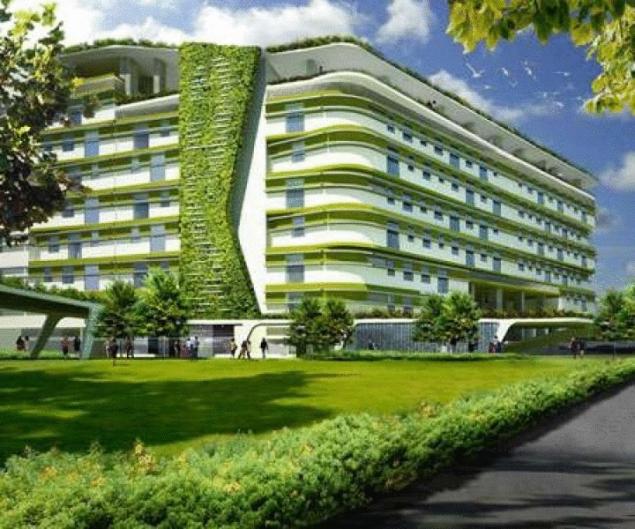
Every year green concrete and brick. At the stand of Lafarge Tarmac, the leading UK provider of ecological building materials, the company Manager Emma Haynes spoke about the main trends in this segment to make the concrete more sustainable by reducing the energy intensity of cement production. The company's stand was one of the Central problems in the sector "construction materials" and attracts the attention of visitors not only by the production technology of energy-efficient concrete mixtures, but the two-storey design, showing "the world without building materials". The promise of installation: no building materials of modern society will not do, but to minimize the carbon footprint can and should be. In this regard it should be noted a serious bias towards the use of straw as insulation. Ancient technology combined with the innovative use of plaster is gaining more and more supporters. It is first and foremost about the individual building. Increasingly, designers are prone to maximum use in the construction of natural stone and Albakov (bricks) made from recycled tires. We have already talked about how the rise in Europe, the ratings of wooden constructions. In the UK the wood think, of course, a sustainable material. In the United Kingdom there is even a special award that encourages builders and designers to use wood — The Wood Awards. Stand founders award was also presented at EcoBuild.
However, despite the desire of most members of the green construction market to minimise the use of steel structures (due to the high intensity of production), altogether indispensable. But in this case there are solutions that will appeal to supporters of eco-efficient construction. The main one is the re-use of aluminium. At the stand of Smart Architectural Aluminum samples of the high quality of the product, in the manufacture of which used 75% of the processed recyclables. This approach allows 95% to reduce the energy intensity of metal production.
Eco-friendly building materials is an inevitable component of a passive house. About how the theme of Passive House popular in Europe, evidenced by the abundance of EcoBuild panel discussion on the issue. Passive house with proper usage of the capabilities of the passive architecture not require a big investment. In the UK, the construction of such green buildings – separated segment of the market.
Modern engineering solutions allow to almost zero to reduce heat loss. Primarily, this is achieved by using homogeneous materials, materials with high resistance to heat transfer, heat insulating multi-chamber Windows and doors, high-quality diagnostics of heat losses at the stage of construction and reconstruction.
And yet, without a heat source will not do even the most protected from the losses of a passive house. For Europe, gas Central heating, to put it mildly, not the most rational decision (in contrast to the rich blue fuel, Russia). Judging by EcoBuild, the most promising solution to the Western engineers see the use of heat pumps or boilers using as fuel wood granules (pellets). The latter is already firmly won the hearts of fans to warm up by the fireplace.
Despite the obvious bias in favor of technology construction of passive houses, active houses also at EcoBuild was not deprived of attention. High-tech solutions for offices and high-rise residential buildings, while not too much heavier financial investment. Modern system of ventilation and air conditioning, the use of alternative sources of energy, introduction of water-saving and energy-saving technologies – all this and more is considered to be expensive. But the European experts do not agree.
There is a perception that green technologies will incur additional costs, says Terence Beckett of BRE Global. But the decision has received in recent years widespread and firmly integrated into the fabric of the house do not require versatrak and are very effective. Green buildings are becoming commonplace, and sustainable development became the standard.
The same standard is the use of various forms of greening living spaces: green roofs, green walls, green facades. One of the market leaders, company Biotecture Ltd, suggested a number of ecodesigners solutions. At the same time, it is worth to mention that the arrangement of the hanging gardens while the destiny of the wealthy houses of London and have donated funds to support the image of green companies.
But overall, again, green technologies are no longer something unreachable for mass implementation. However, experts agree that the main incentive for the further development of the industry must be consumer demand. Which, currently, is at a low level. To whet the public interest in the topic, experts recommend to officially enter the construction lexicon the concept of "green passport". On a primitive level is the most detailed information about clean technologies in the construction of an object. The consumer, according to exhibitors, should know what benefits he will get from living in an energy-efficient house. Not only the direct (economic) but also indirect (environmental).
One of the ideological trends of the near future may become propaganda under the conditional slogan: "Sustainable development – the contribution of each individual". In Europe under this guise will be created community, who will be able to self-manage their district, to monitor the effectiveness of the implementation of green innovations and in your pocket to feel the benefits of such implementation. Experts are sure that nothing better of their own successful experience does not encourage people to use new technologies.
And their technology enough now. Returning to the stands of EcoBuild 2013, it should be noted a significant growth of interest in the topic of water management. At the exhibition, several companies have proposed interesting solutions for rainwater collection, filtering and use it for technical purposes. An undeniable trend – efficient faucets and toilets. The last topic that is not often spoken because of its sensitivity, at London's ExCel was presented very well. If to combine all water-saving solutions into one, we can reduce the average household water consumption by 80-90%.
Same with energy-efficient lighting, the cost of which, when equipped with dimmers, can generally be reduced to "penny" values.
In a word, efficient in all respects the building is a feasible alternative housing of the twentieth century. The tools for making yesterday profanation solutions are already available. Most of them were concentrated from 5 to 7 March in London. Of course, to bring Western technology to the common Russian denominator, it will require some effort. But, as they say, it would wish...
source
Source: /users/104








